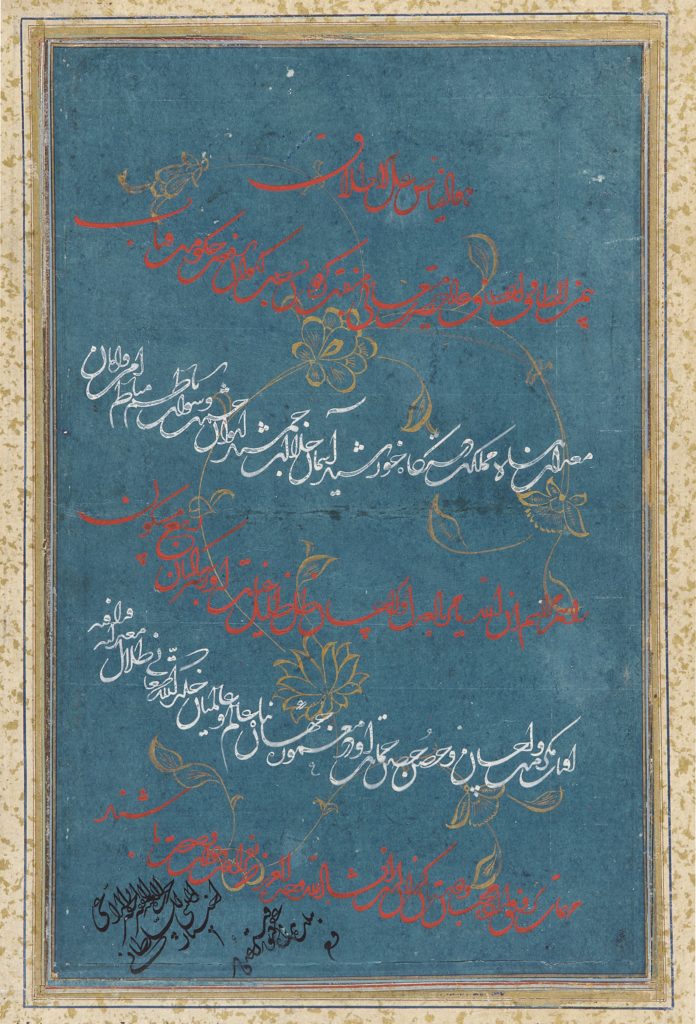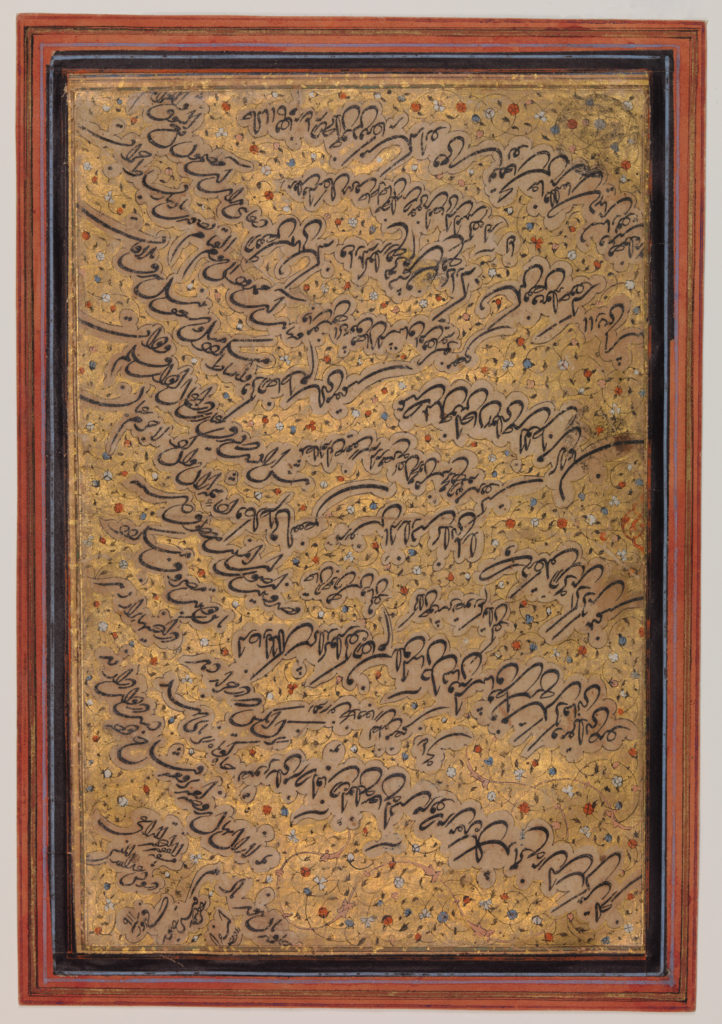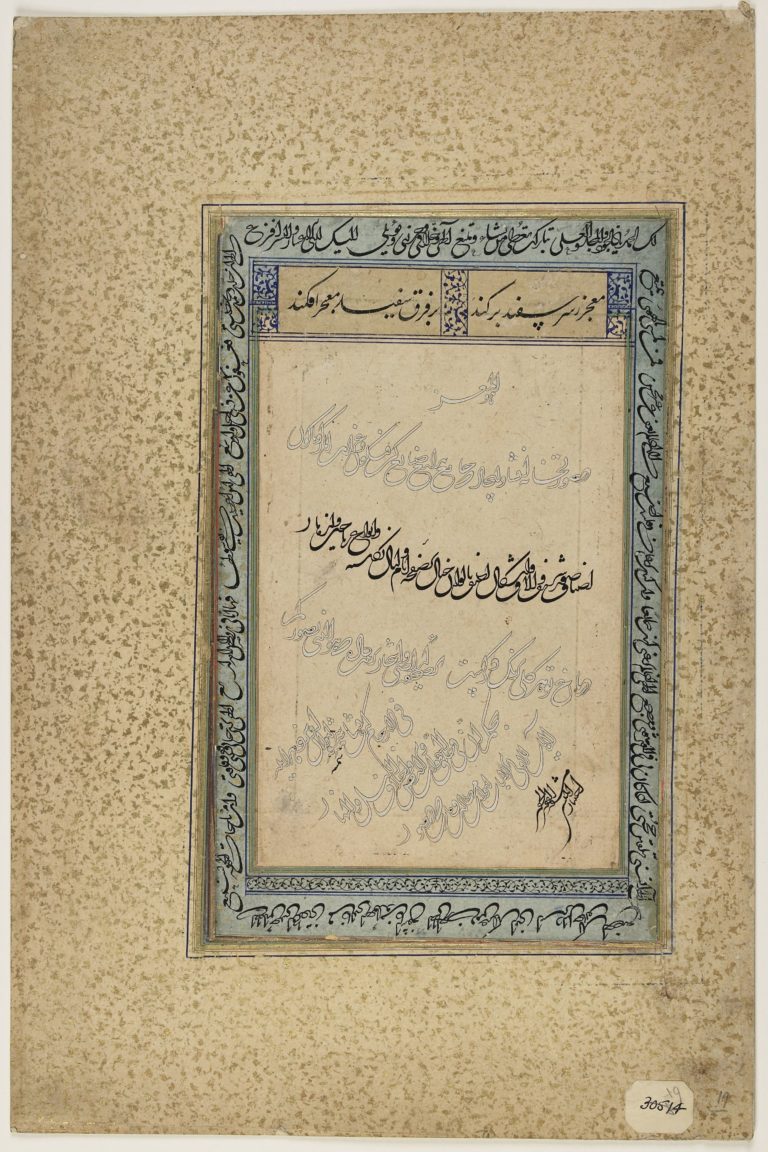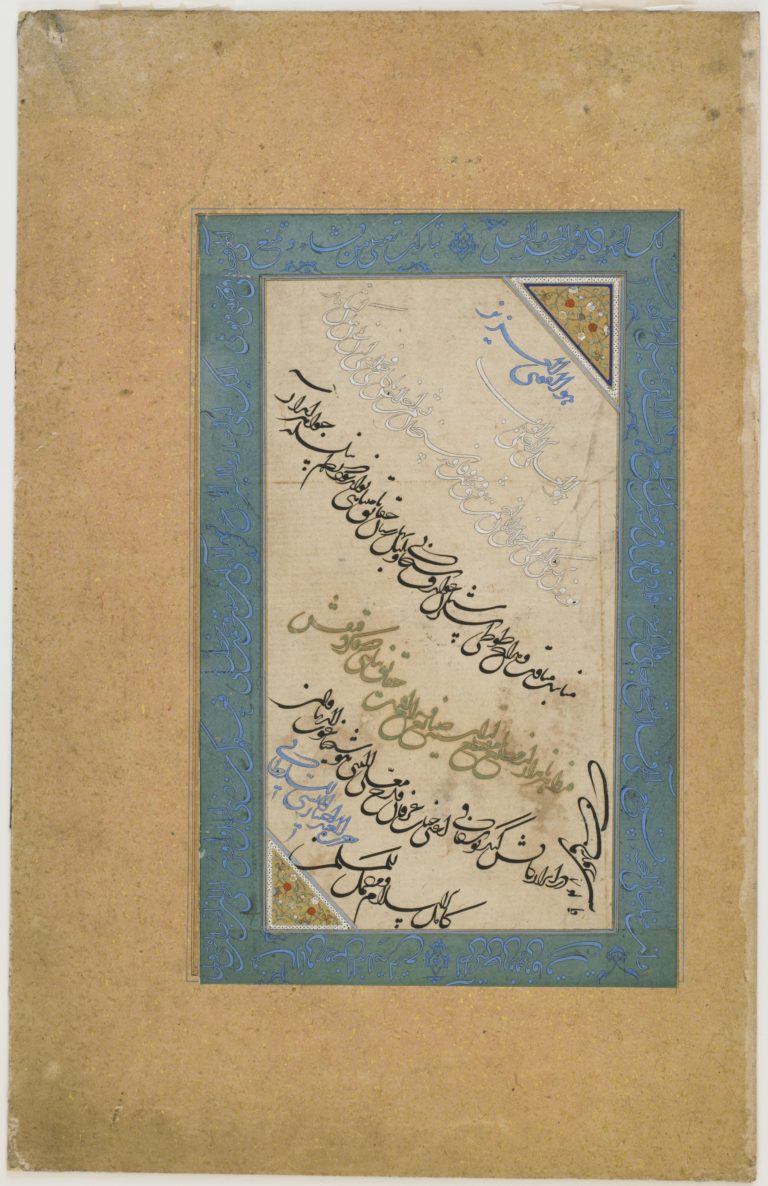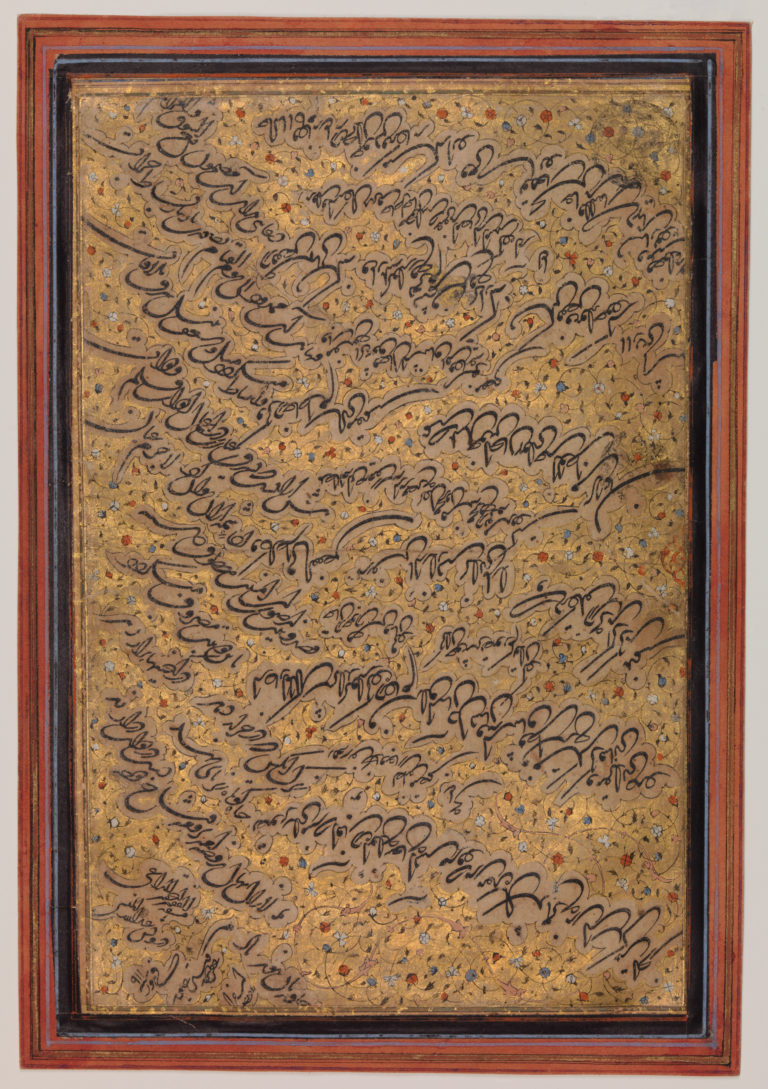Ta‘liq
(Pronounced “tah-leek”)
Meaning
- “Ta‘liq” means “suspension,” or “hanging together”
Uses
- Used for official correspondence in the royal court
- Used for writing books and letters
- Used for transcribing literary works
- Sometimes used for poems and calligraphy specimens
Timeline
- Developed in the 3rd or 4th century A.D.
- Used until almost the end of the 13th century
- Kufic is mostly obsolete today because it is difficult to write any text of length. It is occasionally still used for titles of manuscripts or in architectural inscriptions
Distinctive characteristics
- Formed in 11th century, standardized by 13th century
- Still in use today
Notes
- Letters that don’t connect on the left are often connected in this script (unauthorized ligatures)
- Descending strokes appear as loops
- Letters are rounded with extreme contrasts in letter spacing
- Wide spaces appear between lines
- Lines ascend upward as they move from right to left
